
El Toro and his luchador buddies are short on money. It’s lunchtime and they’re hungry! How they earn it is revealed in frenetic illustrations and colorful language sprinkled with Spanish words. This latest addition to the series is every bit as much fun and sure to delight!
Tacos Today: El Toro and Friends

There are many ways to get to the library: bike, bus, even boat. Enjoy the parade of creatures, all colorful wood sculptures from an artist in Oaxaca, Mexico, on their way there. The vibrant critters appear twice from different angles on double page spreads with English on one side, Spanish on the other.
Vámonos / Let’s Go! Mexican Folk Art Transport
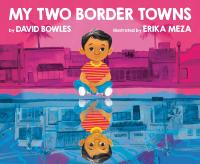
The loving story of a boy’s life on the U.S.-Mexico border, visiting his favorite places on The Other Side / El Otro Lado with his father, spending time with family and friends, and sharing in the responsibility of community care. Also see the book in Spanish: Mis dos pueblos fronterizos (opens in a new window).
My Two Border Towns
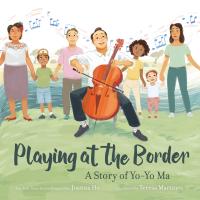
Music is the intersection of cultures as this hopeful story of cellist Yo-Yo Ma reminds readers. He played Bach’s cello suites for people in two countries near the Rio Grande River, “a boundary dividing two countries that used to be one.” Sweeping illustration and lyrical text are completed by an afterward and additional information about the actual event.
Playing at the Border: A Story of Yo-Yo Ma
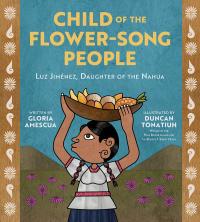
Luz Jimenez would not forget her Nahua culture even after the Mexican Revolution. When she and her family resettled in Mexico City, Luz became a resource for artists and scholars as an Indigenous voice. Illustrated in Tonatiuh’s signature traditional style, the straightforward narrative is enhanced by complete backmatter.
Child of the Flower-Song People: Luz Jimenez, Daughter of the Nahua
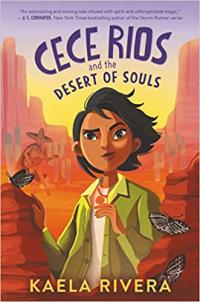
When Cece’s sister, Juana, is kidnapped by a bride-stealing criatura, Cece is determined to get her back even if it means pretending that she’s a dark witch. This slightly dark, taut, and gripping novel is imbued with Mexican lore, told in a cadence that evokes the desert setting.
Cece Rios and the Desert of Souls

Join a young boy and his father on a daring journey from Mexico to Texas to find a new life. Theyll need all the resilience and courage they can muster to safely cross the border (la frontera) and to make a home for themselves in a new land. Based on co-author Alva’s own experience as a young boy. Back matter includes information on immigration, a history of the U.S. and Mexican border, and photos of Alva’s family and hometown.
La Frontera: El viaje con papá / My Journey with Papa

A festive and colorful celebration of the Mexican and Latin American holiday. The rhyming narrative introduces the traditions practiced during El Día de los Muertos or the Day of the Dead, from the sugary, skull-shaped candies (calaveras) and altars built in remembrance of the dearly departed to decorating tombstones and picnics at the cemetery. Spanish words are sprinkled throughout.
Día de los Muertos

Featuring charming visuals and lively, often lyrical prose, this picture book introduces Mexican artist Frida Kahlo, interweaving biographical details while highlighting her special relationships with pets. Folk-art style illustrations vividly evoke the Mexican environment.
Frida Kahlo and Her Animalitos
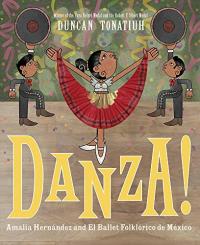
The story of Amalia Hernández, dancer and founder of El Ballet Folklórico de México. It is a celebration of Hernández’s life and of the rich history of dance in Mexico.
Danza!: Amalia Hernández and Mexico’s Folkloric Ballet

Lucía zips through the playground in her cape just like the boys, but when they tell her “girls can’t be superheroes,” suddenly she doesn’t feel so mighty. That’s when her beloved abuela reveals a dazzling secret: Lucía comes from a family of luchadoras, the bold and valiant women of the Mexican lucha libre tradition.
Lucia the Luchadora
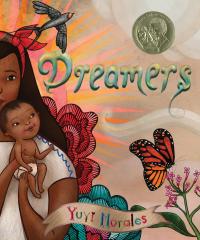
Lyrical prose (in Spanish and English) and vivid mixed media illustrations describe one woman’s journey to a new country, the difficulties, and the power of libraries to transform: “We are stories. We are two languages. We are lucha…We are hope.” In a concluding piece, the author/illustrator describes her story and provides a list of the influential books she read during this period of her life. The gorgeous book is also available in a Spanish edition, Soñadores (opens in a new window).
Dreamers
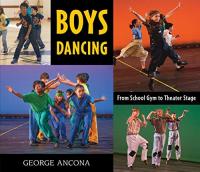
Elementary school-age boys start at the beginning of the school year to study with Pamela at the National Dance Institute of New Mexico. By the end of the year, some will perform “Treasure Island,” others will perform Mexican folktales. All in all, over 20 dances lead up to the grand finale. Dancing is hard work but lots of fun, too, chronicled in this photoessay.
Boys Dancing: From School Gym to Theater Stage
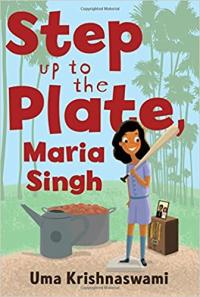
Fifth-grade Maria and her younger brother live with their parents on a farm in Yuba City, California near the end of World War II. Their father is from India, their mother from Mexico. Maria loves to play baseball and is encouraged by her teacher but confronts other problems. Will their field be destroyed? Will the family lose their home? Both humorous and poignant, readers will gain a sense of the period and many of the issues that feel very contemporary.
Step Up to the Plate, Maria Singh
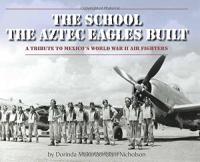
A little known history of the Aztec Eagles, the Mexican Expeditionary Air Force created during World War II, is presented in photographs and crisp text. It is also the story of Sargent Ángel Bocanegra del Castillo, who made certain that a school was built in his hometown in Mexico. This is a unique and well-presented bit of history sure to inspire and inform.
The School the Aztec Eagles Built: A Tribute to Mexico’s World War II Fighters

Niño is back and is hard to defeat – except when the horrible little girls don’t play by the rules! Almost surreal illustrations add humor and surprise as they roll across the pages to a cozy conclusion. Spanish and English are used throughout for a vivacious romp.
Rudas: Niño’s Horrendous Hermanitas
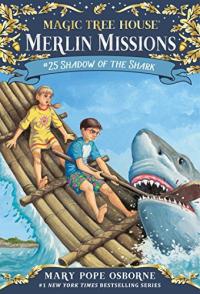
In this Magic Tree House story, Jack and Annie’s vacation in the glorious waters off Mexico’s Yucatan peninsula doesn’t turn out quite like they expect. An encounter with sharks and with a Mayan girl plus a bit of magic create another satisfying, fantastical adventure in the series. A companion book, Sharks and other Predators (opens in a new window) helps readers separate fact from fiction.
Shadow of the Shark
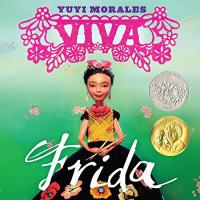
Mixed media illustrations evoke artist Frida Kahlo and lyrical language is used to suggest her life. Rather than a biography, this homage to art and an artist is visually stunning and will likely generate interest in many topics. An afterward about Frida in Spanish and English culminates the presentation.
Viva Frida
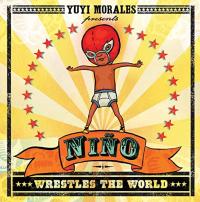
Niño, the Boy, clad in underwear, dons the traditional mask of luchadores to cleverly beat opponents from Mexican lore. Spanish words are included in the bold, colorful design of this appealing book with its surprise ending. End pages provide pronunciation and information on the Spanish language.
Niño Wrestles the World
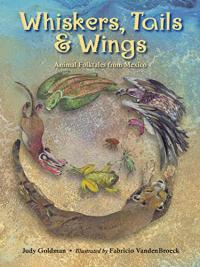
What do a cricket, a turtle, an opossum, a flea, and a frog have in common? Each are featured in a story that comes from one of the indigenous people that live in Mexico. Fluid retellings combine with information about the natives from whose culture the tales were drawn. A glossary and where to go for additional information and sources are included in this attractively illustrated book.
Whiskers, Tails and Wings: Animal Folktales from Mexico
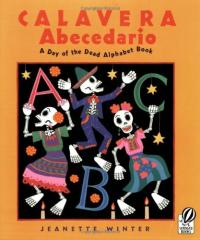
Don Pedro and his family make skeletons for el Día de los Muertos celebration in Mexico City. When the papier-mache Calaveras go to market on fiesta day, each skeleton acts out a letter of the alphabet. Richly toned illustrations in an appealing folk art style introduce the alphabet — from ángel to zapatero. This handsome book concludes with an alphabet glossary and a brief explanation of the Spanish alphabet.
Calavera Abecedario: A Day of the Dead Alphabet Book
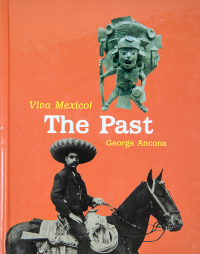
Mexico’s culture, history, and spirit are revealed through The Foods, The Fiestas, The Folk Arts, The Past, and The People. Each volume — whether focusing on food or art, ancient beginnings, or current conflicts — captures the many flavors and traditions of the land and its people.
Viva Mexico!
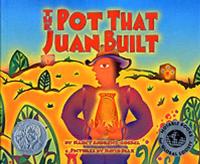
A cumulative poem (in the cadence of “The House that Jack Built”) chronicles the work and life of Mexican potter, Juan Quezada. Words could center around the culture, the potting process, or art & artists.
The Pot that Juan Built
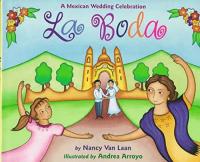
Maria looks to her grandmother to explain the rituals and traditions she observes at her first wedding. Their conversation, sprinkled with Spanish words, is carried by the evocative illustrations that depict this Zapotec Indian wedding celebration in Oaxaca, Mexico. A helpful Spanish glossary and an introduction to Zapotec culture and religion are included.
